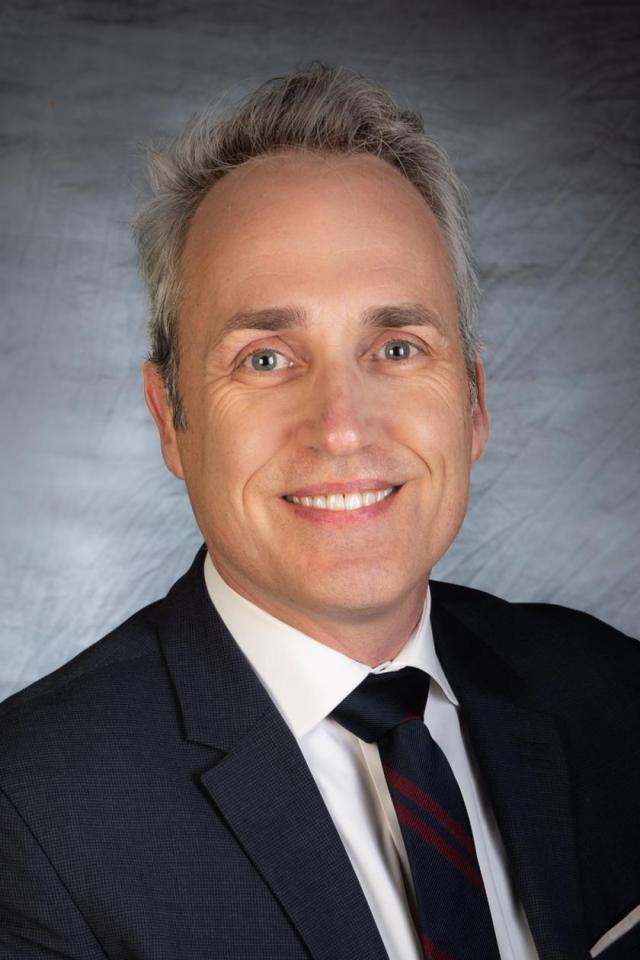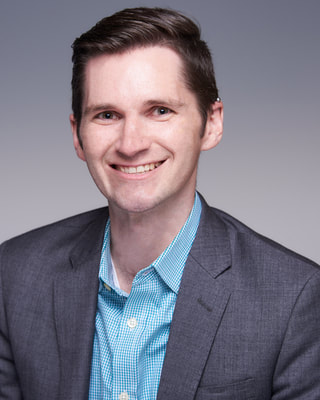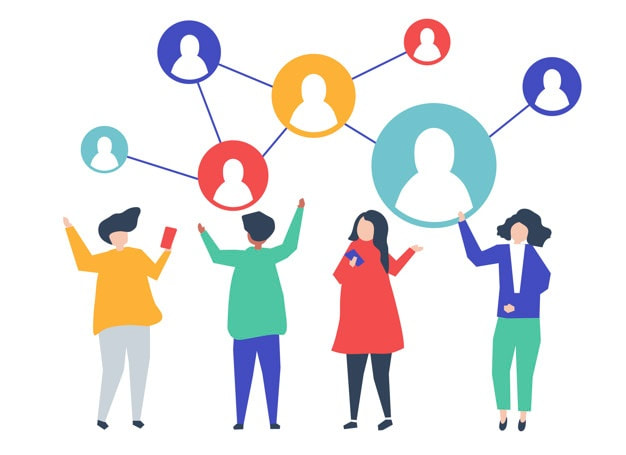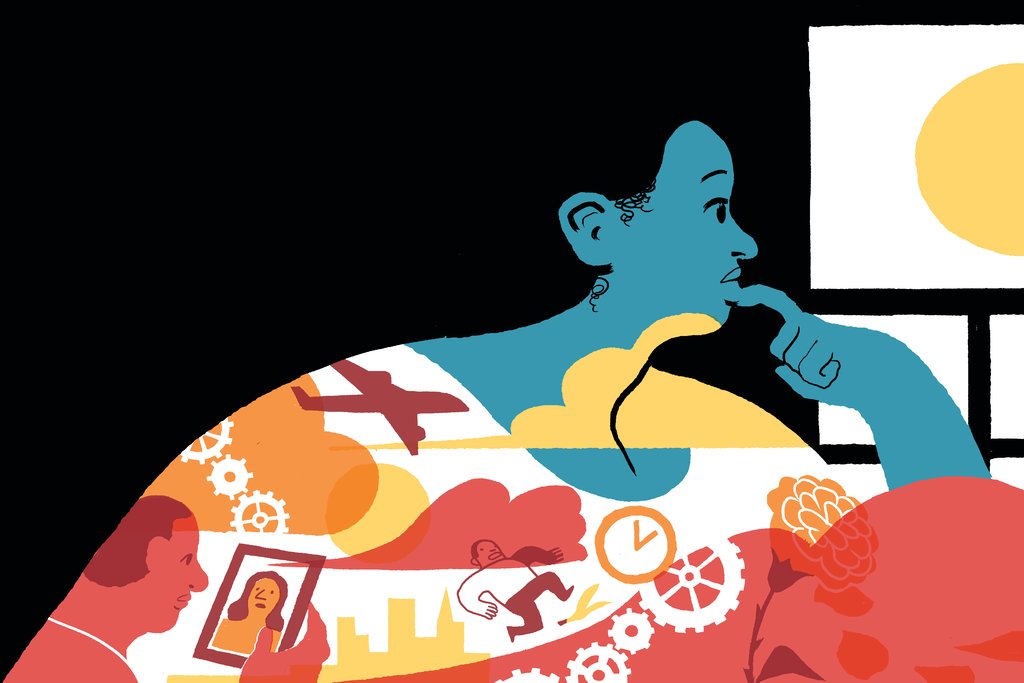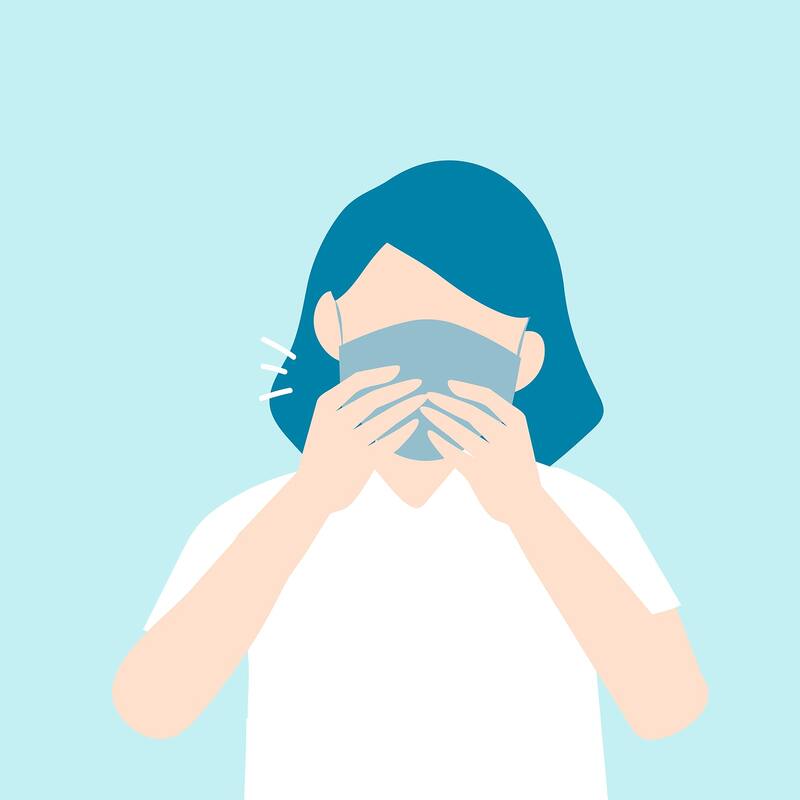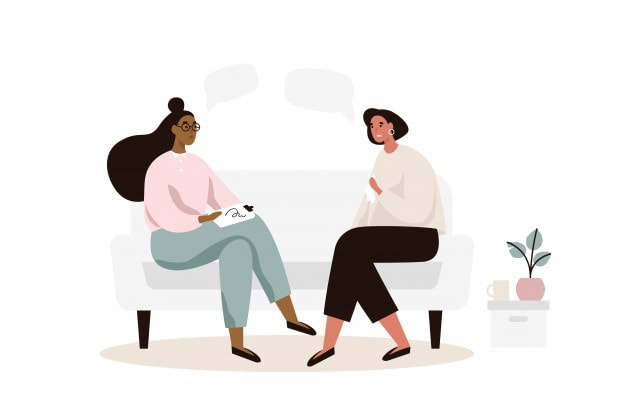The Impact of COVID-19 on Transgender and Nonbinary Americans with the Project AFFIRM Team7/20/2020
By: Hannah Lin (CC '23)
Can you introduce yourselves and what work you do? RENATO BARUCCO: My name is Renato Barucco. I’m the coordinator of the LGBT health program, so I coordinate all the different projects of the program across psychiatry and nursing under the direction of Dr. Walter Bockting and Dr. Anke Ehrhardt.
people gave us a lot of information in their answers, so we thought it would be important to do a qualitative analysis of these answers. That’s what I’m doing right now.
WALTER BOCKTING: I’m Walter Bockting. I’m the principal investigator of the overall study, Project AFFIRM, a longitudinal study of transgender identity development across the lifespan. We have been following participants for over three years. It was Jeremy’s idea during this COVID time to contact them again. It wasn’t initially planned, this was a bit of an expansion. Normally, we have people come in for interviews, and they’ve done that three times: baseline, one year, and two year followup. This time, it was fitting, given the social distancing, to do an online survey instead to see how our transgender people in the three cities that Renato mentioned are coping with COVID-19. JEREMY KIDD: I’m Jeremy Kidd, he/him. I’m an addiction psychiatrist, and when I started this project, I was a postdoctoral research fellow at Columbia University and New York State Psychiatric Institute in the division of substance use disorders, but I’m now transitioning into an assistant professor role at Columbia. I’ve worked with Walter since coming to Columbia in 2013 on some sub-projects within the AFFIRM cohort, and a lot of the work that I am transitioning into doing is looking at social support and the role that social support and gender affirmation play in mitigating some of the negative health outcomes and health disparities that we know occur for trans and gender nonbinary folks.
KASEY JACKMAN: My name’s Kasey Jackman, I use he or they. I’m currently a postdoctoral research fellow at Columbia School of Nursing. I’m also a psychiatric nurse practitioner, and I practiced with the Nurse Practitioner Group at Columbia as well as in New Jersey. My role with Project AFFIRM has been from the beginning of the project, when I was a PhD student. I started in 2013, and I’ve been working with Walter since then. There have been a number of substudies and I’ve led two of the substudies. The first one was about nonsuicidal self-injury among transgender people, and then the second one, more recently, was among Latinx transgender people looking at discrimination, stress, and sleep. We collected various types of data, which was the first time we’ve done that with this cohort. We collected actigraphy data, which means monitoring sleep and wake patterns and activity levels. We collected two samples of saliva, one for cytokines, one for DNA, and we also did some blood pressure monitoring for feasibility to see if that would be something we might want to expand in future studies. In terms of the COVID-19 study, I’ve worked on formulating the survey, distributing the survey, and planning data analysis. You all come from various different backgrounds. Could you talk about your personal and professional paths to the work you’re doing now? JEREMY KIDD: I came to Columbia in 2013. I’m actually back in rural Virginia now, where I grew up, waiting on my COVID test results so I can see my family! I went to medical school in Virginia, then came to Columbia in 2013 for psychiatry residency and was fortunate enough on my interview day to meet with Walter and I think at that point, AFFIRM was probably being planned, I don’t even know if it had started yet.
community, a lot of advocacy and activism work, and I think those are the stories that I hold in my head and the relationships that I think inspired me to keep doing this work, because I recall all of the challenges and the discrimination and the things people that I really care about have experienced, even some people that I’m not in touch with anymore. Those are the stories and experiences behind the data that we’re looking at and the reason that I got involved in doing this work.
RENATO BARUCCO: My background is in psychology. I studied in Italy and moved to New York about 15 years ago. At the beginning, for about eight years, I worked in public health and in transgender healthcare services in underserved communities. I was working in South Bronx primarily, but also in Queens and Brooklyn, particularly with transgender women of color. We were providing mainly CDC (but not only CDC) approved interventions for sexual harm reduction, as they used to call it back then, but also making sure that all trans people in the community were connected to healthcare services that were competent and also affordable at the time, since many of them didn’t have insurance. Then, six years ago, I started working at Columbia, and since then, I’ve been focusing not only on transgender health but also on LGBT health as a whole, particularly LGBT aging. KASEY JACKMAN: I came to this work through the clinical route. I went to nursing school at Columbia, where I completed a bachelor’s in nursing and a master’s in psychiatric-mental health nursing. I practiced as a nurse practitioner for a while.
WALTER BOCKTING: I’ve been working with transgender people since 1986 in research as well as clinically, as a psychologist. I came to Columbia after I served on the Institute of Medicine committee that took stock of what was happening across the country in terms of the health of LGBTQ people and the research informing the healthcare. When we did that assessment, we just recognized that a lot of the work had been on HIV and that there was a great need to go beyond HIV to also look at other health concerns that LGBTQ people have. I came to Columbia to help develop and implement a comprehensive research agenda. Given that transgender people were my first love, so to speak, in terms of the work I’ve done all these years, we set out to develop a new study for transgender people, and we wanted it to be longitudinal so that we could actually get a sense of what the lives of transgender people were like over the life course. A lot of the work that had been done up to that point focused more on the time of transition, and we know that people’s lives go on after that, so that was the impetus for Project AFFIRM, the larger project in which we did this recent survey to find out how the people we are following are doing during COVID-19. How did you recruit people for Project AFFIRM? WALTER BOCKTING: We did it through something called venue-based recruitment. We have collaborators in San Francisco and in Atlanta, so in the three cities, we went out to various different venues, both online and offline, where trans and nonbinary people congregate, and we put the word out for our study, and people then signed up. They did that either in
person or via our website, and from that, I think we had about 1500 people that registered for our study. From that, we chose a very diverse group, diverse in gender, diverse in age, diverse in race/ethnicity, for a total of almost 350 people in those three cities. Our goal was not to get as many people as possible; our goal was really to get a very diverse group that was recruited from the community and that we could follow over time.
JEREMY KIDD: One of the strengths of Project AFFIRM, as Walter was saying, is that it’s a cohort that’s been brought together and then maintained now for four years through a lot of engagement and research. The Project AFFIRM team, during more typical times, has also been out in the community and visible at community events. It makes it really easy to reach out to people in some ways because these are folks that all of us have, to a greater or lesser extent, gotten to know over the years.
What kinds of questions were asked in the survey and later in the in-depth interviews? JEREMY KIDD: We focused the survey primarily on the impact of COVID-19 and measures that were taken or recommended by government officials to prevent the spread of COVID-19, so things like physical distancing, social distancing, and the uptake of those things among trans folks in ways that would be expected of anybody in the population, but also in some particular ways. We used a measure called the Pandemic Stress Index, which was developed at the University of Miami, to ask about some of the general ways that people’s lives had changed, in terms of cancelled travel plans, time spent at home, caring for sick loved ones, loss of employment, changes in housing status. We also asked about things that were more particular for this population, such as the loss of access to supports like LGBTQ-specific social supports or trans-specific social supports, community center groups, community organizations that people might have been a part of before but couldn’t access. The other area that we wanted to be sure to ask about were disruptions in gender-affirming care, so whether people had had gender-affirming surgeries that were either cancelled or postponed—I clinically hear from a lot of people who had a lot of difficulty, at various times, attaining gender-affirming hormone treatment, so disruptions in that—as well as disruptions in mental healthcare. We asked about those kinds of things as well. We asked about some other things that we thought might be affected, such as mental health, tobacco/alcohol/substance use outcomes, and sleep to cover other health outcomes that might have been impacted by some of the things that are happening in folks’ lives during the pandemic. WALTER BOCKTING: One of the nice things about doing this in an ongoing group that we’re following is that yes, we’re asking specific questions that are unique to this period of time, but we’re also able to ask them again how they’re doing in terms of their mental health, in terms of substance use, in terms of their wellbeing, so that we can actually see where they changed from previous years.
RENATO BARUCCO: I just started working on this analysis last week, so this is just my impression. We’re still collecting the data and we’re also analyzing in detail what the participants said, but the first impression is that there are a lot of issues, and they are separated into two main categories. One is issues that probably a lot of people are dealing with or dealt with during the months of the pandemic in New York, with isolation and the feeling of being trapped in their apartment and not being able to go outside or to see loved ones or family, and also some changes in their lives: losing jobs, not being able to start a job, or not being able to pursue the plans that they had planned in the months prior to the pandemic. But these are issues that we can expect to find also in the general population.
Within these answers, I see a lot of solitude built upon a very hostile world. You have a hostile environment around you, and you have this community that really helps you negotiate and face some of the struggles, and then all of a sudden you don’t even have that anymore. So that was something that seems to be unique. I see a lot of people saying, “I really miss seeing my friends, and I really miss seeing people I used to go to the park with,” and a lot of people connect with the same people online, but it’s just not the same thing. Another aspect that can come in is disruption in living arrangement, because people couldn’t afford the rent anymore, so one of the roommates left, and now they have an empty room in their apartment and they don’t know who to let into the apartment, because you have to ensure your roommate is understanding, is supportive [of your trans or nonbinary identity]. A lot of people who break up right before or during the pandemic from their significant other also lose an important source of support. The two main things that we’re really noticing so far is the loss of the support system of the community, but also loss of their living arrangement, living situations in general. They also talked about not being able to access healthcare services as much as before. This was very important to some people, especially those who were about to go back on hormones or those who were starting some gender-affirming
procedures, medical procedures, because all of that was interrupted. But I have to say that most of these people said, “I was supposed to have surgery in 3 weeks, but all those sorts of medical procedures are now cancelled, so that’s frustrating, but I also understand that they need to do this, so ultimately I’m going to suck it up and it’s going to be okay for now.”
That was the attitude, their understanding of the situation, while others really felt somewhat more endangered since they weren’t able to access the medical services because they didn’t have internet access or they didn’t know how to have a telehealth visit at the time. I guess that as the pandemic progressed, they probably found other strategies to see the doctors and probably were able to use telehealth. But that’s something that came up quite often as well: access to healthcare services, both in terms of physical healthcare, transgender healthcare specifically, and mental healthcare. WALTER BOCKTING: I think another way of saying what you said, Renato, is that our community, the community that we work with, relies a lot on each other for support, and the pandemic has affected that for many. The ways in which they connect are now suddenly not as easy to access. I think we see that a lot. They have their families of choice, their support in the community, and it has been hard to access that during this time. KASEY JACKMAN: I agree that the loss of social support is really key. In our Latinx substudy, for example, people were not reporting very high levels of discrimination, but just the stress of living as a transgender or nonbinary person in a world that’s not set up for that, as one of our previous participants has expressed it, is very stressful, even if they’re not facing a lot of direct discrimination. I think the loss of that community support is very hard for a lot of people.
As a side note, I recently wore a Project AFFIRM T-shirt to the Queer Liberation March, and on the back, it says “tell your story.” That was our slogan when we started this study: tell your story. It’s a theme that has carried through this longitudinal study and all the substudies. I think it is really important for the community and has benefited our engagement with our participants, that opportunity for them to tell their story. JEREMY KIDD: And as I share with you some of the numbers, I think it’ll become clear why it will be so interesting and helpful to do these in-depth interviews because there are so many things behind some of these numbers. We did a survey near the end of March, shortly after the New York City stay at home order went into effect. Atlanta had not, so you can imagine that it’s a bit of a moving target. We ran the survey until the end of June.
if we think about the evolving nature of that, people who completed the survey in March or April wouldn’t have been able to get a test. People who completed the survey in June would have been able to get a test maybe, but even that has changed again as the pandemic has evolved.
About 70% of the cohort described the impact of the pandemic on their daily lives as extreme or very much in terms of the impact. There wasn’t a single person who said, not surprisingly, that their life wasn’t impacted at all by this. Almost all had been engaged in some sort of social distancing or isolation. This is a number that was very interesting to me: 30% of the cohort was unemployed at this time. However, only 16.7% of those individuals had lost their jobs during the pandemic. This sort of shows what a high unemployment rate there is among trans folks, and there’s lots of research out there describing why that probably is, and a lot of that is related to discrimination. If you look at the 30%, this is probably a comparable number to people that are losing their job in the general population, but about half of the people in Project AFFIRM had already had difficulty accessing employment even before the pandemic. 56.7% reported some sort of personal financial loss during the pandemic, and about 30%, or almost a third of individuals reported difficulty accessing basic needs like food and medications during the pandemic. Over half reported loss of access to LGBTQ-specific supports, and about 40% reported loss of access to transgender/nonbinary specific support systems. 11% had a surgery that was cancelled or postponed. About a third of individuals who are on hormones had experienced some sort of disruption in being able to access hormones. About half of our cohort was engaged in some sort of mental healthcare prior to the pandemic, and about a third of those individuals experienced some sort of disruption in their mental healthcare during the pandemic.
what the ways are that those strategies are falling short, and how we as clinicians and public health researchers might be able to develop tools or interventions that could help provide more support, even in this current environment where we’re not all able to gather together in a room like we used to and hopefully will again soon.
On the Project AFFIRM website, I noticed a particular theme being repeated: promoting resilience, developing resilience, among transgender and nonbinary individuals. I love that goal, because you’re not just finding something with your research, you’re building something and helping people grow. Could you talk about what that means to you?
life experience. So the emphasis on resilience brings forth this other side: we need to understand the problems so we can help people to live fuller, healthier lives, but there’s a lot of existing strength in the community that we can further build on and develop.
WALTER BOCKTING: I’ll say that part of the reason for a longitudinal study is that we have already seen in our data that people learn and adapt over time. Yes, there continue to be challenges, and if anything, there has been a little bit of backlash. A lot of progress was made, certainly visibility, years ago, and the last couple of years have been a bit more challenging as some people have tried to undo some of the progress that was made. So we are seeing how people adapt to that and overall, I expect that the lives of trans and nonbinary people will continue to improve. Perhaps Renato can tell us about a specific example, I’m thinking about our employment study, on what we are doing to promote resilience. RENATO BARUCCO: The employment study is part of Project AFFIRM and we conducted a series of qualitative interviews with some of our participants to understand what some of the challenges were both while seeking employment as transgender or nonbinary people or transitioning while on the job: whether they required any sort of assistance from human resources or if it was something they dealt with by themselves.
For instance, a lot of them reported choosing to work for not-for-profit organizations or LGBT organizations so that they didn’t have to come out or have that conversation all together. But they desired, or they thought about, employment elsewhere.
I also wanted to add, based on what Kasey said earlier, that even in these qualitative answers to the survey, very often you see gratitude toward these ongoing and longitudinal studies. A lot of the open-ended questions start with, “thank you so much for doing this job, a lot of things have changed since last year, but thank you for staying in touch.” I’m paraphrasing, of course. I just really wanted to highlight that because it comes back over and over again. WALTER BOCKTING: I think part of our goal along the way is to have our information inform programs and policies to further promote resilience, improve conditions, and reduce barriers that people face. For employment, we’re going to work with companies and other employers to interest them and engage them into diversifying their workforce for greater inclusion of trans and nonbinary people. JEREMY KIDD: I neglected to mention that one of the other areas that’s included in our survey that we haven’t looked at yet is coping strategies that people utilize. I think that those will be really important to look at for all the reasons that everyone has been saying because that’s where we’re going to learn about the resilience that these individuals already have in their lives. Since these three sites were not impacted in the same way at the same time by the pandemic, it’ll be interesting to see what people are doing to cope with the stress and the isolation in different places, because that might provide insight into what we could think about offering and might be helpful to people in parts of the country that are now being more impacted by the pandemic so that they can learn from the resiliency that other people have been sharing with us. How has research on transgender and nonbinary health changed since you started, and where do you want to see it go in the near and far future? RENATO BARUCCO: As I mentioned earlier, in the first part of my career, I wasn’t necessarily working on research, but we were working with the CDC, and they were doing the research with the data that we were providing them. What I noticed they needed was definitely more opportunities to participate in research and to participate in research that is specific about transgender health. Even ten years ago, all these interventions were about HIV/AIDS. They started realizing that it’s important that we better understand how to provide transgender healthcare, but that wasn’t the goal, necessarily. It became part of the goal, but they were interested in lowering the rate of HIV/AIDS infections and improving HIV care.
KASEY JACKMAN: I agree with Renato. There’s been a mushrooming of transgender health research. I remember when Project AFFIRM started and we went into the field; there were two other large transgender health studies that went into the field the same year. There are increasing opportunities for our community to participate in these research studies, which I think a lot of them appreciate while some of them may feel over-researched or over-examined. One of the things that I think is better recognized now, is that the community really values having trans people involved in the research team. That’s something that comes up often among community members. Participants ask: “are there trans people in this research team?” or they give feedback such as “I appreciated recognizing someone on the research team who I could identify with.” Obviously, the trans population is a small minority, so it may be difficult, but I think that it’s something that researchers increasingly recognize is an important thing to do. And finally, in response to the point about HIV research: even though a lot of trans health research started out as HIV research, some HIV research is still not inclusive of trans people. For example, some HIV research will include transgender women, but not transgender men. So we still see that as an under-studied group within HIV research. WALTER BOCKTING: I will just say that what we talked about earlier, I think, is newer, that we are focusing more on a strength-based perspective. I think it is important to document all the challenges that people face, and we certainly will continue to do that, but it’s also now about resilience and the strengths, and how we can build upon those. I think that’s one of the shifts that I have seen over the years. I’m also thinking about your work, Kasey, that you alluded to earlier: using some emerging methods to look at biomarkers, so not only surveys and people’s self-reporting. As a psychologist, I feel that people’s own perspectives and how they are perceiving things, to me, are always the most important. But we have a fair amount of that which has been done. We’re moving into getting other measures, maybe, Kasey, you could say more about that. KASEY JACKMAN: That was something that was new for our cohort and quite novel for transgender health research in general, to gather different types of data from our research participants. As you were saying, Walter, traditionally, most of the data has been self-reported: we sit down, we interview people or administer a survey online to collect self-reported data, so these newer methods allow us to collect more objective data.
JEREMY KIDD: I think related to that is this idea that research, whether we’re talking about depression, whether we’re talking about substance use, or whether we’re talking about trauma, has moved beyond self-report data. We’ve moved into the era of using MRIs, using biomarkers, using more sophisticated measurements. I think that for trans people, and really, this is a challenging thing for LGBTQ research across the board, our communities really deserve to have research done in the same cutting edge way as these other studies that have primarily cisgender, heterosexual folks, and frankly, mostly men, involved in a lot of clinical trials.
Lastly, what gives you hope for the future? This can be related to your research, science in general, or society at large. Take it wherever you want! RENATO BARUCCO: I think that what gives me hope mirrors what I’m learning from our participants, and that’s technology, which we know really comes with a lot of benefits, but it also comes with some concerns, especially regarding privacy and all of these different companies collecting information. Something that I noticed also from my experience during this pandemic and in the survey answers is that Zoom, Facebook, Instagram, and Reddit, as well as gaming platforms, like Discord, really became a lifeline to keep in touch with others. It’s still not the same, but everyone was mentioning, “I found this online group: it’s not my group or my friends, but at least I have that.” JEREMY KIDD: I was really worried at the start of the pandemic, thinking about queer kids and queer youth, worrying about a lot of college kids who now had to live with their families again and what that was going to be like. But over the course of the pandemic, I bet every other week, I get a Facebook message or a text or an email, sometimes from somebody I don’t know that well, but often people who I’ve known in different phases of my life, who are saying, ‘“my kid just came out to me as queer or as trans or as gay, I want to know how to be supportive of them.” I don’t want to oversubscribe that to COVID, but parents are spending a lot more time with their kids, and kids are spending a lot more time with their parents and learning about them. I think that gives me such hope, to see parents in rural America, where there are not huge queer communities, reaching out and really proactively saying, “how can I be a better parent to my queer kid?” To see that happening in such a consistent, surprising way definitely gives me hope. KASEY JACKMAN: I think the thing that gives me hope is the increasing attention and awareness to gender diversity and incorporating issues of gender diversity into curricula, whether it’s for healthcare providers in training or in schools and universities. Also, at the research level, we’ve had, among our team in the Program for the Study of LGBT health, success in obtaining NIH and private foundation funding for trans studies, which is really wonderful. Those things give me hope. WALTER BOCKTING: I think for me, it’s the increased visibility of nonbinary identities within the community, and I think there’s also risk involved in that, we’ve learned that. For example, our people talk about how being engaged in advocacy is very important to them, but at the same time, that can take a toll on them. I think overall, it’s the increased visibility and the courage of people to stand up and share their experiences, share their story with us, including stories that are more diverse than the traditional narrative of transgender people. I think that really gives me hope, and I think it’s wonderful for the next generations, so that there will be a range of gender identities and expressions that they can relate to and find a sense of belonging with.
0 Comments
Your comment will be posted after it is approved.
Leave a Reply. |


